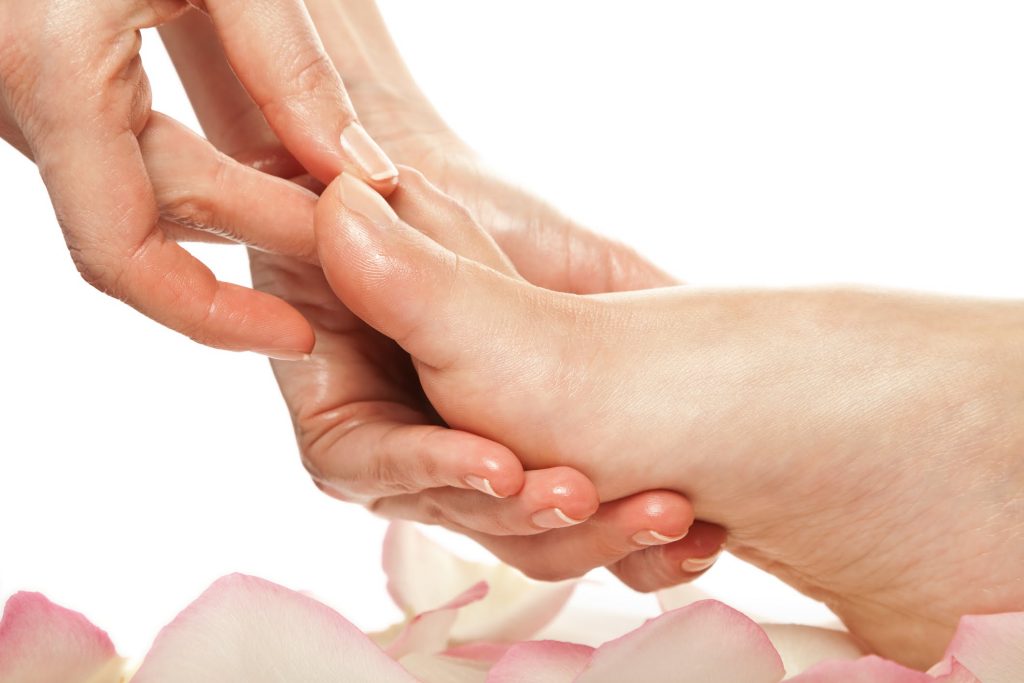 How much attention do you give your feet? Many of us are less aware of our feet than the rest of our body parts – unless we have pain or other discomfort, we tend to think of our lowest extremities only as a means of moving around. When we make time for self-care, we rarely put our feet first. But caring for ourselves might require starting with our feet. Consider: reflexology.
How much attention do you give your feet? Many of us are less aware of our feet than the rest of our body parts – unless we have pain or other discomfort, we tend to think of our lowest extremities only as a means of moving around. When we make time for self-care, we rarely put our feet first. But caring for ourselves might require starting with our feet. Consider: reflexology.
A (Quick) History of Reflexology
By definition, reflexology is when “reflex points in the feet are massaged in a particular way to bring about an effect in areas of the body quite distant from the feet”1. While the practice is rooted in several cultures, most notably that of the ancient Chinese and ancient Egyptians, modern reflexology is derived from zone therapy. In the early 1900s, Dr. William Fitzgerald, a nose and throat surgeon, noticed that pressure placed on certain areas of patients’ hands would decrease their pain levels during procedures. Through his research, Dr. Fitzgerald published extensively on his findings that zones of the body impact one another.
Today, reflexology focuses primarily on areas in the feet, which tend to be more responsive than those in the hands. Modern reflexology encourages circulation by putting pressure on certain points in the feet then massaging the surrounding tissue, stimulating the circulatory system first to aid the areas under pressure, then transporting waste products from that tissue. Additionally, relieving tension in the nerves can stimulate healing and improve functionality. Finally, pressure and massage of reflex points stimulates endorphins, the body’s natural pain relief reaction, in the brain.
Caring for Your Body Through Your Feet
Reflexology can help to reset the body. According to Barbara and Kevin Kurz, authors of Complete Reflexology for Life, the practice “interrupts stress, relieves conditions, and teaches the body how to behave in a better, healthier manner”2. Stimulating the reflexes in our feet, other areas of the body are impacted. Following a treatment, you may experience your body detoxifying itself, including increased elimination, cold-like symptoms, and a change in your sleep patterns. This indicates your body is responding appropriately to the stimulation of its circulatory and nervous system. Keep drinking water and eating clean.
More than anything, taking the time for a relaxing foot soak and reflexology session is a form of self-care that helps our minds and bodies perform better. By taking time to focus on the parts of our body that often carry the heaviest burden – literally, the weight of our entire bodies – we jolt our systems into reacting to the changes taking place. Reflexology is more than just a good foot massage – it helps to reduce stress, improve circulation, and jump-start healing in our bodies. Schedule your reflexology session today or take advantage of our August foot soak special, which includes a 20-minute reflexology session.
1 Nicola, Hall. Principles of Reflexology. Philadelphia: Singing Dragon, 2013. pp 11. Print.
2 Barbara, Kunz and Kevin Kunz. Complete Reflexology for Life. New York: DK Publishing, 2007. pp 10. Print.
